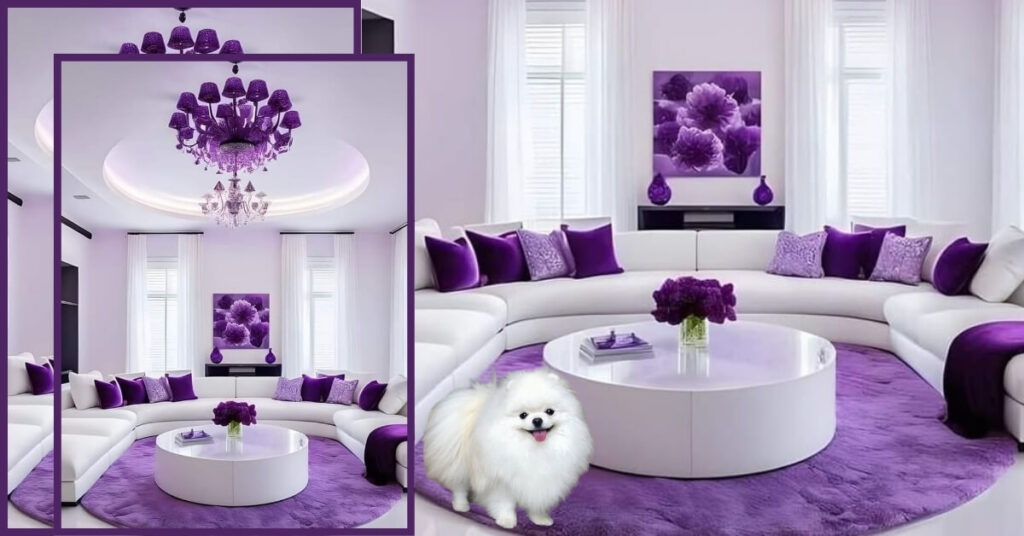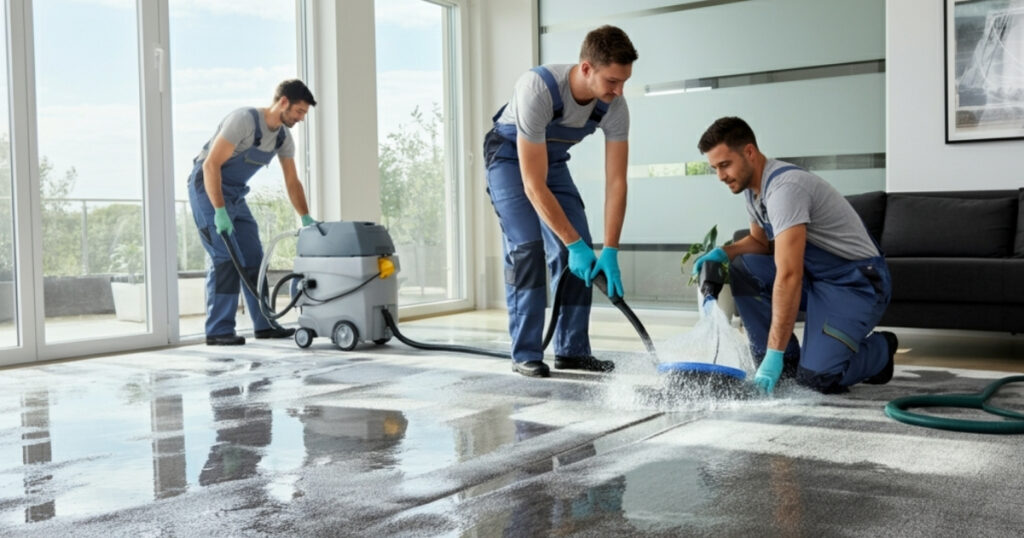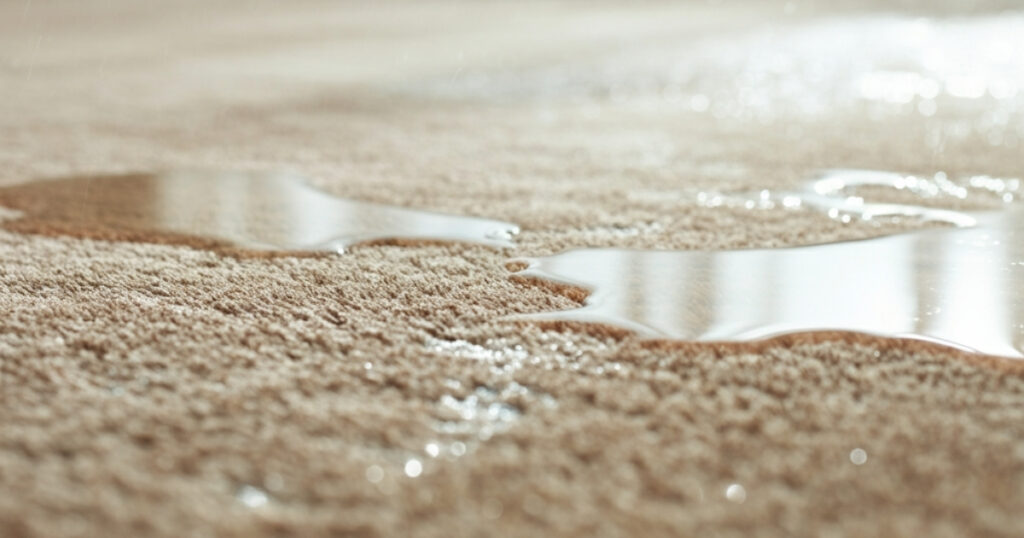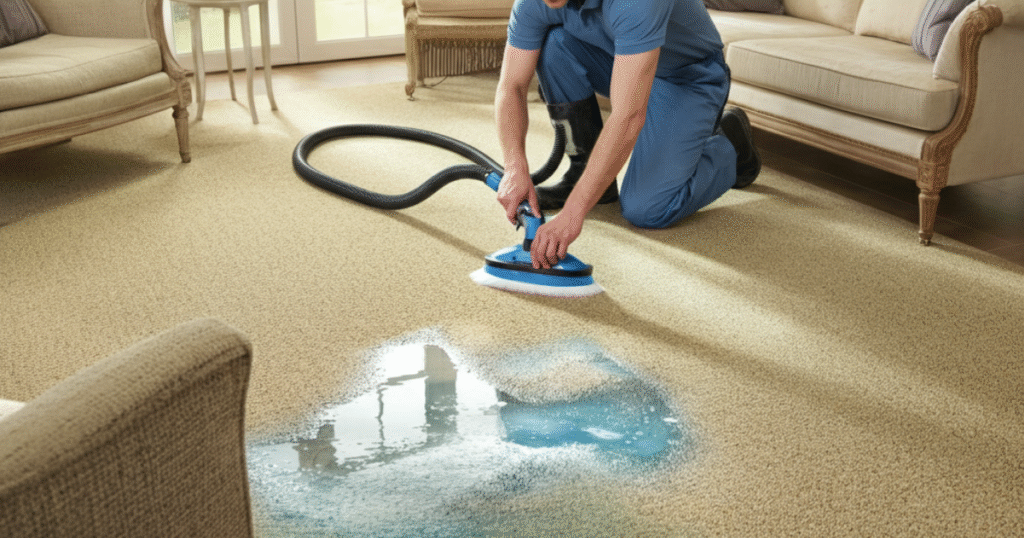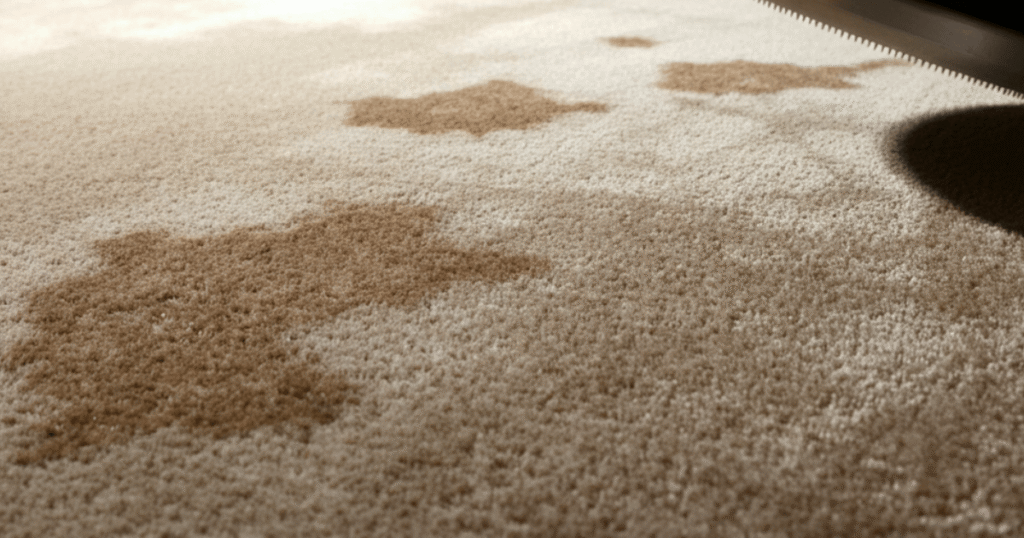Mildew on leather furniture can be a frustrating problem, but it’s definitely fixable. This common issue occurs when leather is exposed to moisture and poor ventilation, creating perfect conditions for mold and mildew growth. The good thing is that with the right approach, you can restore your leather furniture to its original condition.
Learning how to remove mildew from leather furniture requires understanding both the cleaning process and prevention methods. This guide covers everything from identifying mildew damage to protecting your furniture long-term. Most importantly, acting quickly prevents permanent staining and structural damage to your valuable leather pieces.
What Causes Mildew on Leather Furniture
Mildew thrives in specific environmental conditions. High humidity levels above 60% create an ideal breeding ground for these unwanted organisms. Poor air circulation makes the problem worse by trapping moisture around your furniture.
Leather naturally absorbs moisture from the air. When combined with organic materials used in leather production, this creates a perfect food source for mildew. Basements, bathrooms, and poorly ventilated rooms are common problem areas where these conditions occur frequently.
Common Signs of Mildew Damage
Recognizing mildew early helps prevent extensive damage. White or grayish spots often appear first on leather surfaces. These spots may look fuzzy or powdery, especially in the early stages of growth.
A musty odor typically accompanies visible mildew growth. This smell becomes stronger over time if left untreated. Additionally, the leather may feel damp or sticky to the touch in affected areas.
Why Quick Action Matters
Mildew spreads rapidly across leather surfaces. What starts as small spots can cover entire furniture pieces within weeks. Moreover, prolonged exposure weakens leather fibers, causing permanent damage that cannot be reversed.
Early intervention saves both time and money. Simple cleaning methods work effectively on fresh mildew growth. However, established colonies require more aggressive treatment and may cause lasting discoloration.
Essential Supplies for Mildew Removal
Gathering the right materials makes the cleaning process more effective. White vinegar serves as an excellent natural antifungal agent. Its acidic properties kill mildew spores without damaging most leather types.
Rubbing alcohol provides another effective cleaning option. It evaporates quickly, reducing moisture exposure that could worsen the problem. However, test any cleaning solution on an inconspicuous area first.
Basic Cleaning Tools
Soft brushes help remove surface mildew without scratching leather. Old toothbrushes work well for detailed areas and seams. Meanwhile, clean cloths absorb moisture and cleaning solutions effectively.
Vacuum cleaners with upholstery attachments remove loose spores before wet cleaning. This prevents spreading mildew to clean areas during the removal process. Always use fresh attachments to avoid cross-contamination.
Protective Equipment
Wearing gloves protects your skin from cleaning chemicals and mildew exposure. Face masks prevent inhaling spores, which can cause respiratory irritation. Well-ventilated work areas reduce exposure risks significantly.
Safety goggles protect eyes from splashing cleaning solutions. Though mildew removal rarely involves harsh chemicals, taking precautions prevents unexpected reactions or accidents.
Step-by-Step Mildew Removal Process
Start by moving affected furniture to a well-ventilated area. Outdoor spaces work best when weather permits. This prevents spreading spores to other areas of your home.
Remove loose mildew using a dry brush or vacuum attachment. Work gently to avoid pushing spores deeper into leather pores. Dispose of vacuum bags immediately after use to prevent recontamination.
Creating Your Cleaning Solution
Mix equal parts white vinegar and water in a spray bottle. This solution kills most mildew types effectively while remaining gentle on leather. Alternatively, use rubbing alcohol mixed with water in the same ratio.
Test your chosen solution on a hidden area first. Apply a small amount and wait 24 hours to check for adverse reactions. This step prevents damage to visible furniture areas.
Applying the Treatment
Spray the cleaning solution lightly over affected areas. Avoid saturating the leather, as excess moisture can cause additional problems. Let the solution sit for 10-15 minutes to penetrate mildew growth.
Wipe away the solution using clean, dry cloths. Work in circular motions to lift mildew residue effectively. Change cloths frequently to avoid spreading spores to clean areas.
Drying and Conditioning
Allow leather to air dry completely before applying any conditioners. This process may take several hours depending on humidity levels. Fans can speed drying without causing heat damage.
Apply leather conditioner once the surface is completely dry. This restores flexibility and prevents cracking that often follows mildew treatment. Use products specifically designed for your leather type.
Advanced Cleaning Methods for Stubborn Mildew
Sometimes standard cleaning methods aren’t sufficient for heavy mildew infestations. Commercial leather cleaners offer stronger antifungal properties. These products are specifically formulated to handle tough mildew problems.
Saddle soap provides another effective option for stubborn cases. Its deep-cleaning properties penetrate leather pores where mildew hides. However, it may darken some leather colors, so test first.
When to Use Stronger Solutions
Persistent odors after initial cleaning indicate deeper mildew penetration. Visible staining that doesn’t respond to vinegar or alcohol treatments requires stronger intervention. Multiple cleaning attempts without improvement suggest professional help may be needed.
Large affected areas covering more than 25% of furniture surfaces often need commercial products. These situations typically develop over extended periods, allowing mildew to establish deep root systems.
Professional Treatment Options
Leather restoration specialists have access to industrial-grade cleaning equipment. They can assess damage severity and recommend appropriate treatment methods. Some cases require specialized ozone treatments or enzyme cleaners.
Professional services become cost-effective for valuable or antique leather furniture. Their expertise prevents further damage that could result from improper home treatment attempts.
Preventing Future Mildew Growth
Controlling humidity levels prevents most mildew problems. Maintain indoor humidity between 30-50% using dehumidifiers or air conditioning. Monitor levels with digital hygrometers for accurate readings.
Improve air circulation around leather furniture. Avoid placing pieces directly against walls where air movement is restricted. Ceiling fans or portable fans help maintain consistent airflow.
Regular Maintenance Practices
Clean leather furniture monthly with appropriate products. This removes organic residues that feed mildew growth. Regular conditioning keeps leather healthy and less susceptible to mold problems.
Inspect furniture regularly for early mildew signs. Check hidden areas like back cushions and undersides where problems often start. Early detection makes treatment much easier and more effective.
Environmental Controls
Position furniture away from moisture sources like windows, bathrooms, and kitchens. These areas experience higher humidity levels that promote mildew growth. Consider using moisture barriers in problem areas.
Store leather furniture properly during humid seasons. Cover pieces with breathable materials that allow air circulation while protecting from excess moisture. Avoid plastic covers that trap humidity.
Common Mistakes to Avoid
Using bleach or harsh chemicals can permanently damage leather surfaces. These products may remove mildew but often cause discoloration or cracking. Stick to gentle, leather-safe cleaning methods.
Over-wetting leather during cleaning creates new problems. Excess moisture penetrates deeply and can cause swelling, cracking, or additional mildew growth. Always use minimal amounts of cleaning solutions.
Timing and Technique Errors
Rushing the drying process with heat sources damages leather. High temperatures cause cracking and shrinkage that cannot be reversed. Allow natural air drying for best results.
Skipping the conditioning step leaves leather vulnerable to future damage. Clean leather becomes dry and brittle without proper conditioning. This makes it more susceptible to mildew and other problems.
Product Selection Issues
Using furniture polish or other inappropriate products creates buildup that attracts dirt and mildew. Stick to products specifically designed for leather care. Read labels carefully before application.
Applying conditioner to damp leather traps moisture and can worsen mildew problems. Always ensure complete drying before conditioning treatments. This prevents creating ideal conditions for future growth.
Frequently Asked Questions
1. Can mildew permanently damage leather furniture?
Yes, if left untreated, mildew can cause permanent staining and weaken leather fibers. However, early treatment usually prevents lasting damage.
2. Is it safe to use bleach on leather to remove mildew?
No, bleach will damage and discolor leather. Use vinegar or alcohol-based solutions instead for safe mildew removal.
3. How long does it take to completely remove mildew from leather?
Most cases require 2-3 treatment cycles over several days. Stubborn infestations may need a week or more of repeated treatments.
4. Can I prevent mildew by storing leather furniture in plastic covers?
No, plastic covers trap moisture and actually promote mildew growth. Use breathable fabric covers instead.
5. Should I throw away cushions if they have mildew?
Not necessarily. Remove covers and treat them separately if possible. Foam inserts may need professional cleaning or replacement.
6. Does mildew on leather furniture pose health risks?
Yes, mildew spores can trigger allergies and respiratory problems. Always wear protective equipment and work in ventilated areas.
7. Can I use a hair dryer to speed up the drying process?
No, heat from hair dryers can crack and damage leather. Allow natural air drying for best results.
8. How often should I condition leather furniture after mildew treatment?
Condition immediately after cleaning and drying, then follow manufacturer recommendations for ongoing care, typically every 3-6 months.
9. Will insurance cover mildew damage to leather furniture?
Coverage varies by policy and cause of moisture. Check with your insurance provider about specific coverage details.
10. Can I use essential oils to prevent future mildew growth?
Some essential oils have antifungal properties, but they may stain leather. Test carefully and consider professional leather protection products instead.
Taking Action Against Mildew Today
Successfully removing mildew from leather furniture requires patience and the right approach. Start with gentle cleaning methods and gradually increase intensity if needed. Remember that prevention is always easier than treatment.
Regular maintenance and environmental control prevent most mildew problems from developing. Keep humidity levels low, ensure good air circulation, and clean your furniture regularly. These simple steps protect your investment and maintain your leather’s beauty for years to come. Searching for solutions? This post offers practical answers: Best Carpet Material for Allergies.
As an Amazon Associate, I earn from qualifying purchases.

